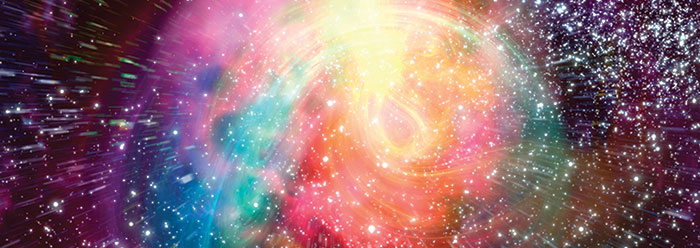Some say that Christians should re-interpret what Genesis states about the origin of the universe to match the claims of the Big Bang model.But which Big Bang model are they talking about? Several versions have cropped up since Georges Lemaître suggested the idea in 1931.1 Although these versions all say the universe expanded and cooled over many billions of years, they differ significantly in the details of events.
In 1979, physicist Alan Guth envisioned a major modification to solve a number of serious difficulties. He posited that shortly after the Big Bang, the universe supposedly underwent an enormous but extremely brief growth spurt called inflation. After this brief inflationary period, the universe continued to expand but at a slower rate.2 Inflation became an essential part of the Big Bang model.
Theorists eventually concluded that inflation, once started, would never completely stop. Rather, quantum mechanical uncertainties would cause different regions of space to stop inflating at different times. This would have resulted in the formation of pockets of non-inflating space contained within a sea of still-inflating space. These islands of space would become, in effect, their own universes.
This newer version of inflation theory predicted the existence of infinitely many universes within a great multiverse.3 In this version, inflation actually caused the Big Bang.4
Many secular theorists liked the multiverse idea. They acknowledged that it seemed wildly improbable that our existence could be the result of a cosmic accident, but the multiverse seemed to give them a way to dodge the argument for design. With infinitely many universes supposedly in existence, they claimed that we were simply lucky enough to live in a universe that has conditions for life to exist. However, as noted in a previous Acts & Facts article, this argument is fatally flawed.5
The current version of the Big Bang model involves a number of quantities (such as “dark energy” and “dark matter”) that earlier versions did not have. Furthermore, the bizarre logical consequences of inflation theory are now leading some theorists to propose another version of the Big Bang called the Ekpyrotic Model.6 They speculate that the Big Bang was caused by a collision between two 3-D worlds (called “branes”) moving along a fourth hidden dimension.7 Of course, we only know of one 3-D world that actually exists!
Is there a lesson here? Secularists have long pressured Christians to compromise with these origins tales, yet the secular theorists themselves eventually abandoned them. Instead of trusting the changing, fallible stories of sinful men who were not present at creation, how much better it is to trust the written record of the One who knows all things, who never lies, and who was there—creating.
References
- Profile: Georges Lemaitre, Father of the Big Bang. 2000. In Soter, S. and N. deGrasse Tyson, eds. Cosmic Horizons: Astronomy at the Cutting Edge. New York, NY: New Press.
- Lemley, B. Guth’s Grand Guess. Discover Magazine. Posted on discovermagazine.com April 1, 2002, accessed October 22, 2012.
- Steinhardt, P. J. 2011. The Inflation Debate. Scientific American. 304 (4): 36-43.
- Guth, A. The Inflationary Universe. Edge. Posted on edge.org, accessed October 22, 2012.
- Hebert, J. 2012. A Universe from Nothing? Acts & Facts. 41 (7): 11-13.
- Ekpyrosis is the Greek word for “conflagration.” The name reflects the fact that this particular evolutionary model (and an extension of it called the Cyclic Model) is somewhat similar to an evolutionary model of the ancient Greek Stoic philosophers.
- Steinhardt, P. J. A Brief Introduction to the Ekpyrotic Universe. Princeton University. Posted on princeton.edu, accessed October 22, 2012.
* Dr. Hebert is Research Associate at the Institute for Creation Research and received his Ph.D. in Physics from the University of Texas at Dallas.
Cite this article: Hebert, J. 2013. The Ever-Changing Big Bang Story. Acts & Facts. 42 (1): 14.














